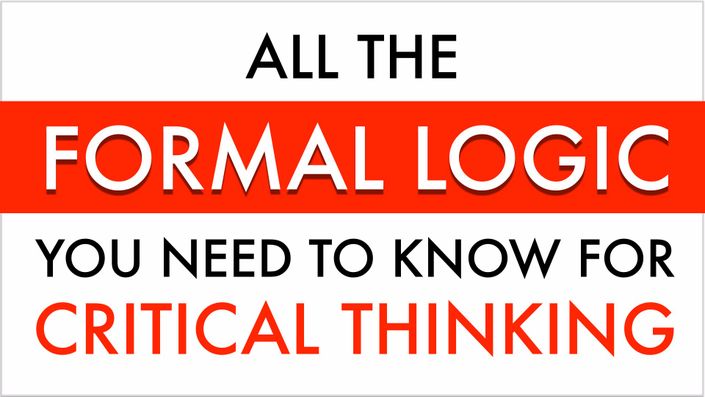
All the Formal Logic You Need to Know
for Critical Thinking
Just enough to understand formal fallacies and to think critically about the logical structure of ordinary language
Watch Promo
NOTE: This course is included in the site-wide bundle which unlocks every course in the Academy.
Some elementary logic concepts are important for critical thinking. These include basic concepts of propositional logic (also known as "sentential logic" or "statement logic"). This is where, for example, you learn the proper meaning of terms like "contradiction" and "consistency", which should be part of everyone's logical vocabulary.
In most textbooks, this material is included as part of a much bigger discussion of formal languages and deduction systems. All of this is very interesting, but not directly relevant for critical thinking and argument analysis.
So what I've done in this course is cut out that extra material and focus only on the logical terms and definitions from propositional logic that are helpful for critical thinking. For example, many fallacies can only be understood if you first understand how they are grounded in basic concepts of propositional logic.
Another benefit of studying this material is that you gain a deeper understanding of the logical structure of ordinary language. I know from experience that this knowledge can improve your ability to express yourself clearly and effectively.
What Will I Learn in This Course?
In this course you'll learn:
- how to interpret the basic compound claims in propositional logic ("A and B", "A or B", "If A then B", and "not-A")
- the difference between contradictory claims, contrary claims, and contradictions
- the logical definitions of consistency and inconsistency
- how to interpret conditional statements ("If A then B"), and how to recognize and interpret the variety of ways that conditional statements can be expressed in ordinary language
- the difference between categorical (or "Aristotelian") logic and propositional logic, and how to interpret the basic categorical claims, "All A are B" and "Some A are B"
What Do I Get With This Course?
When you enroll in this course you get
- 24 video lectures, totaling 1 hour and 35 minutes of viewing time
- Full transcripts for each of the lectures, embedded below the videos
- 13 text lectures, totaling almost 60,000 words in length
- Discussion comments for each of the lectures, allowing you to ask and respond to questions and comments
- A 72 page pdf ebook that includes edited transcripts of all of the video lectures, suitable for printing or viewing on a desktop computer or tablet device
